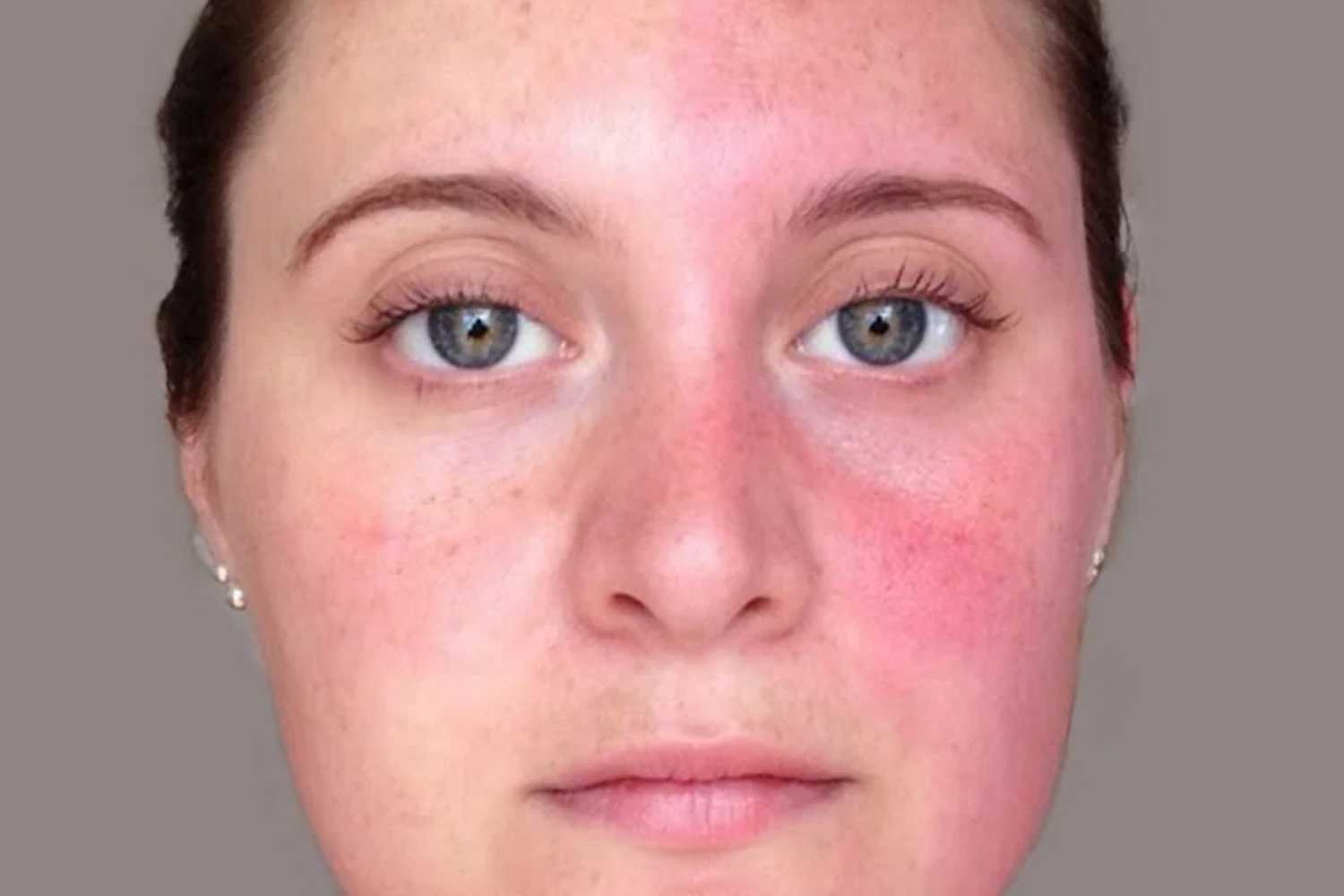Asymmetric facial sweating during exercise may signal rare nerve disorders like Harlequin or Horner’s syndrome. Learn how to spot the signs and when to seek help.

You’re working out, heart pumping, breath quickening—and then you notice something strange. Only half your face is red and sweaty, while the other side stays completely dry and its usual color. It may look like an odd bodily quirk, but it could be a red flag for a neurological condition. Known as asymmetric sweating, this phenomenon may signal the presence of two rare disorders that affect the sympathetic nervous system: Harlequin syndrome and Horner’s syndrome.
While the two conditions differ significantly in their symptoms, they share this peculiar half-and-half sweating pattern. And understanding these subtle signs can help you catch an issue that might otherwise slip under the radar.
A stressed nervous system
Our bodies run on a delicate and remarkably sophisticated autopilot system called the autonomic nervous system, responsible for things like heartbeat, respiration, and—yes—sweating. A key part of this system is the sympathetic nervous system, which kicks in during stress or physical activity.
When this finely tuned mechanism is disrupted, it can lead to some very specific symptoms. One of the key players is the sympathetic chain, a nerve bundle located along the spine, which controls the dilation of facial blood vessels and perspiration. Damage to this chain can affect only one side of the body, resulting in asymmetric symptoms.
Harlequin syndrome: when half your face turns red
Harlequin syndrome is characterized by sudden flushing and sweating on one side of the face, neck, and chest—while the other side remains dry and unchanged.
The condition gets its name from the iconic two-toned mask of Harlequin, the character from Italy’s commedia dell’arte. The symptoms typically show up when the sympathetic nervous system is activated. That includes:
- Exercise
- Heat exposure
- Spicy food
- Emotional stress
These episodes are temporary, lasting anywhere from a few minutes to a couple of hours, until the body cools down. The dividing line between the sweaty and dry side is usually a perfect vertical split, running down from the forehead to the chest as if drawn with a ruler.
Horner’s syndrome: when the eye gives it away
Horner’s syndrome, on the other hand, affects the face in a different way. It presents with a classic triad of symptoms:
- “Ptosis” (drooping of the upper eyelid),
- “Miosis” (a constricted pupil)
- “Anhidrosis” (lack of sweating).
Unlike Harlequin syndrome, Horner’s syndrome isn’t about too much sweating—it’s about the absence of it. And thanks to the more visible facial features—especially the shrunken pupil and the drooping eyelid—it’s often easier to spot, even when the person is at rest.
causes: when nerves take damage
In many cases, the exact cause of Harlequin syndrome remains unknown. Researchers believe it’s related to an interruption in nerve communication between the two sides of the body.
Known or suspected triggers include:
- Surgery in the neck or chest area
- Physical trauma
- Tumors pressing on nerve pathways
- Neurological diseases
- Congenital nerve damage
One particular surgical procedure carries a heightened risk: anterior cervical spine surgery. This operation, which accesses the spine through the front of the neck, hanppens to be close to the sympathetic nerve chain—raising the chances of accidental injury.
Numbers and diagnosis
In the U.S., it’s estimated that fewer than 1,000 people are affected by Harlequin syndrome. It was first formally described only in 1988, making it a fairly recent entry in modern medical literature.
Diagnosing it properly usually involves:
- A detailed physical exam
- Sweat tests to assess the nervous system’s response
- Imaging scans to rule out tumors or abnormal masses
- A full neurological evaluation
It’s even possible for someone to have both Harlequin and Horner’s syndromes simultaneously, since they involve similar underlying damage to the sympathetic nerve chain.
Living with asymmetric sweating
Harlequin syndrome is not life-threatening, nor does it affect life expectancy. Many patients simply learn to live with the symptoms, especially since they’re often sporadic and harmless.
Treatment depends on what’s causing the syndrome. Options include:
- Surgical removal of tumors or compressive masses
- Management of any associated neurological conditions
- Psychological support to cope with the aesthetic and emotional effects
Some cases even resolve on their own, while others remain stable over time. Many patients learn to anticipate and manage episodes, especially those triggered by predictable situations like exercise or heat.
When to see a doctor
The sudden appearance of asymmetric sweating is never something to ignore. Even though it’s rarely a sign of something severe, it could indicate:
- Hidden tumors
- Progressive nerve damage
- Emerging neurological disorders
A neurologist can help distinguish Harlequin syndrome from Horner’s syndrome using targeted tests, and guide the patient toward a proper diagnosis and treatment plan—or at the very least, provide reassurance.
The bottom line? Asymmetric sweating is your body sending a signal, and it’s a signal worth listening to. With the right diagnosis—and treatment when necessary—most people can return to a full, active life, as long as they follow medical advice and stay informed about their condition.
